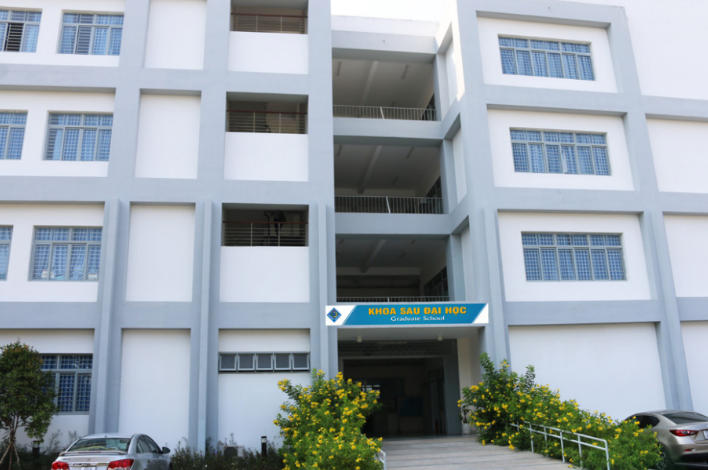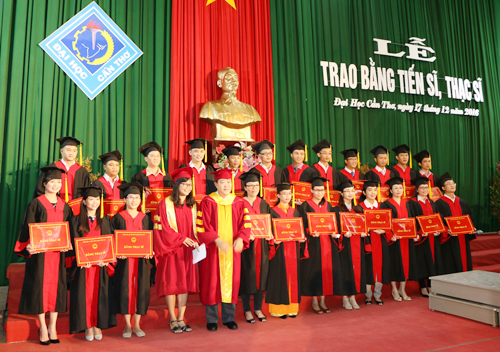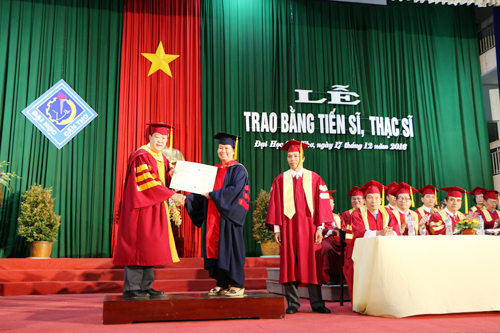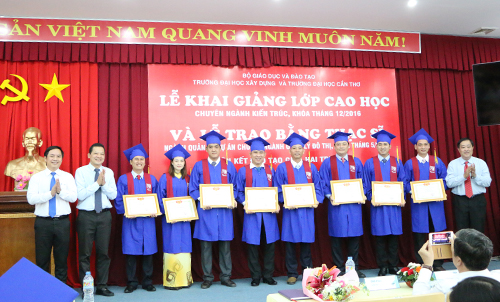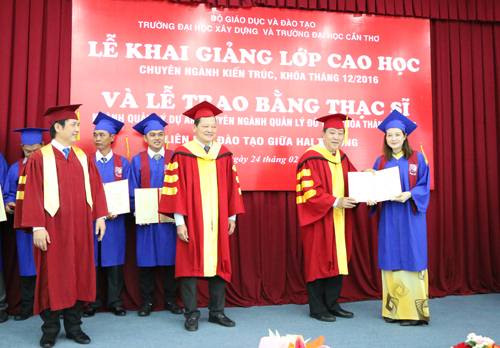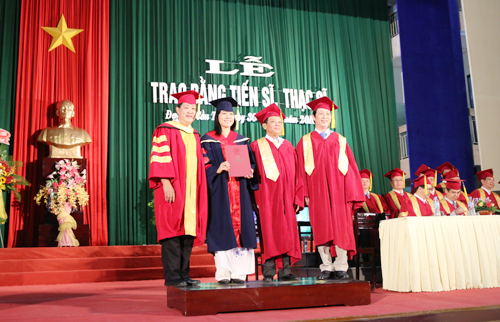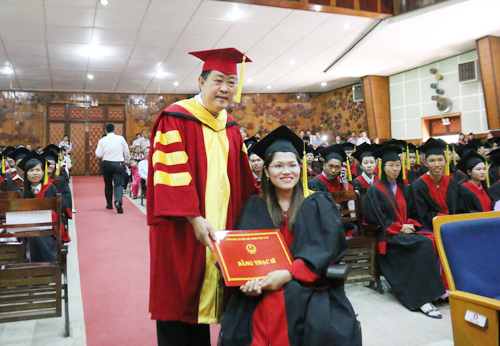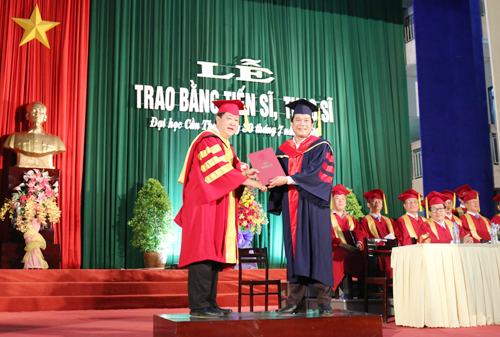
Tên đề tài: Đặc điểm di truyền, sinh học sinh sản và sinh thái học dinh dưỡng của cá thòi lòi vạch (Periophthalmus gracilis) và cá thòi lòi chấm đen (Periophthalmus variabilis) ở một số tỉnh ven biển Đồng bằng sông Cửu Long
Tác giả: Hứa Văn Ủ, Khóa: 2021
Ngành: Công nghệ sinh học; Mã số: 9420201. Nhóm ngành: Khoa học sự sống
Người hướng dẫn: GS.TS. Đinh Minh Quang - Trường Đại học Cần Thơ
- Tóm tắt nội dung luận án
Nghiên cứu được thực hiện nhằm cung cấp được dẫn liệu về đa dạng di truyền, sinh học sinh sản và sinh thái học dinh dưỡng của loài cá thòi lòi vạch và thòi lòi chấm đen. Đề tài thực hiện ba nội dung sau: (i) Xác định trình tự vùng gene COI và vùng gene 18S của loài cá thòi lòi vạch và thòi lòi chấm đen; (ii) Nghiên cứu một số đặc điểm về sinh học sinh sản của loài cá thòi lòi vạch và thòi lòi chấm đen; (iii) Nghiên cứu đặc điểm sinh thái học dinh dưỡng của loài cá thòi lòi vạch và thòi lòi chấm đen.
Đề tài đã thu được các kết quả như sau:
(i) Đã khuếch đại và giải trình tự thành công 24 chuỗi trình tự vùng gene COI và 24 chuỗi trình tự vùng gene 18S trong nhân với kích thước theo thứ tự ~650 bp và ~500 bp. Khoảng cách di truyền giữa hai loài của gene COI là 18,7% và của gene 18S là 1,4%. Với giá trị bootstrap 100%, cây di truyền gene COI và gene 18S được chia thành hai nhóm rõ ràng.
(ii) Tỉ lệ giới tính ở cả hai loài đều xấp xỉ 1:1. Cá thòi lòi chấm đen và cá thòi lòi vạch có khả năng sinh sản quanh năm, tập trung cao vào mùa mưa từ tháng 6 đến tháng 11. Sức sinh sản tuyệt đối và tương đối của cá thòi lòi chấm đen lần lượt dao động từ 696 - 8.124 trứng/cá cái và 256 - 1.023 trứng/g cá cái. Sức sinh sản tuyệt đối và tương đối của cá thòi lòi vạch động từ 523 - 8.562 trứng/cá cái và 902 - 6.961 trứng/g cá cái. Sức sinh sản của cả hai loài đều có mối quan hệ hồi quy chặt chẽ với chiều dài và khối lượng cá.
(iii) Phổ thức ăn của cá thòi lòi chấm đen khá đa dạng với 7 loại thức ăn chính gồm: tép, cá, ốc, còng, giun, kiến và mùn (mảnh vụ hữu cơ). Trong đó, kiến và tép là hai nguồn thức ăn chính của loài này. Cá thòi lòi vạch là loài ăn lọc với nguồn thức ăn chủ yếu là các loài phiêu sinh như Bacillariophyta, Cyanophyta, Chlorophyta, Euglenophyta, ngoài ra còn ăn mùn và một số loài động vật phù du nhỏ khác.
- Những kết quả mới của luận án
Đây là công trình đầu tiên ở Đồng bằng sông Cửu Long và ở Việt Nam về Đặc điểm di truyền, sinh học sinh sản và sinh thái học dinh dưỡng của cá thòi lòi vạch và cá thòi lòi chấm đen ở một số tỉnh ven biển Đồng bằng sông Cửu Long.
Đã đăng ký mới 24 trình tự vùng gene COI và 24 trình tự vùng gene 18S của hai loài cá thòi lòi vạch và thòi lòi chấm đen trên ngân hàng gene NCBI.
Xác định được đặc điểm hình thái, các giai đoạn phát triển của noãn sào và tinh sào ở cá thòi lòi vạch và cá thòi lòi chấm đen; Xác định được mùa vụ sinh sản, sức sinh sản tuyệt đối và tương đối của cả hai loài.
Xác định được phổ thức ăn cá thòi lòi chấm đen gồm 7 loại chính, với kiến và tép là nguồn thức ăn chủ yếu; cá thòi lòi vạch ăn chủ yếu phiêu sinh động vật phù du nhỏ.
- Các ứng dụng/khả năng ứng dụng trong thực tiễn, các vấn đề cần tiếp tục nghiên cứu
3.1 Các ứng dụng/khả năng ứng dụng trong thực tiễn
Luận án này cung cấp một nguồn dẫn liệu khoa học đầy đủ và có hệ thống về phân loại hai loài thuộc giống Periophthalmus, cùng với thông tin về sinh học sinh sản và sinh thái học dinh dưỡng của cá thòi lòi vạch và cá thòi lòi chấm đen ở vùng cửa sông ven biển ĐBSCL. Kết quả nghiên cứu sẽ là tài liệu tham khảo quý giá cho các nghiên cứu liên quan đến đặc điểm sinh học sinh sản và sinh thái học dinh dưỡng của những loài khác thuộc giống Periophthalmus ở Việt Nam.
Những đặc điểm về di truyền, sinh học sinh sản và sinh thái học dinh dưỡng được làm rõ trong nghiên cứu sẽ là cơ sở dữ liệu quan trọng cho việc nghiên cứu sinh sản và nuôi nhân tạo loài cá này ở vùng ven biển ĐBSCL. Điều này góp phần vào việc bảo vệ và phát triển bền vững ngành nuôi thủy sản tại khu vực.
3.2 Các vấn đề cần tiếp tục nghiên cứu
Nghiên cứu các biện pháp bảo vệ môi trường sống của hai loài cá thòi lòi này, đặc biệt là trong mùa sinh sản từ tháng 6 đến tháng 11, để đảm bảo nguồn lợi sinh vật được duy trì và phát triển bền vững.
Nghiên cứu sâu hơn về chu kỳ sinh sản và nhu cầu dinh dưỡng của hai loài để xây dựng kế hoạch quản lý và khai thác hợp lý.
Thesis title: Genetic characteristics, reproductive biology, and nutritional ecology of slender mudskipper (Periophthalmus gracilis) and dusky-gilled mudskipper (Periophthalmus variabilis) in some coastal provinces in the Mekong Delta
- Major: Biotechnology Code: 9420201
- Full name of PhD student: Hua Van U Year: 2021
- Scientific supervisor: Prof. Dr. Dinh Minh Quang
- Educational institution: Institute of Food and Biotechnology, Can Tho University.
- Content of thesis summary
This study was conducted to provide data on the genetic diversity, reproductive biology, and nutritional ecology of the slender mudskipper and the dusky-gilled mudskipper. The research focuses on three main objectives: (i) Sequencing the COI gene region and the 18S rRNA gene region of these two mudskipper species; (ii) Investigating reproductive biological characteristics of slender mudskipper and dusky-gilled mudskipper; (iii) Examining the nutritional ecological traits of these two mudskipper species.
The results were as follows:
(i) 24 mitochondrial COI gene sequences and 24 nuclear 18S gene sequences were successfully amplified and sequenced with 650 bp and 500 bp. The genetic distance between the two species for the COI gene was 18.7%, and for the 18S gene was 1.4%. With a bootstrap value of 100%, the genetic tree of COI and 18S gene was divided into two groups.
(ii) The sex ratio in both species is approximately 1:1. Dusky-gilled mudskipper and slender mudskipper could reproduce all year round, with main peaks in the wet season from June to November. The absolute and relative fecundity of dusky-gilled mudskipper was 696 - 8,124 eggs/female and 256 - 1,023 eggs/g female, respectively. Slender mudskipper’s absolute and relative fecundity was 523 - 8,562 eggs/female and 902 - 6,961 eggs/g female, respectively. The fecundity of both species had a positive relationship with fish length and weight.
(iii) The dusky-gilled mudskipper was a carnivore with seven main types of food, including shrimp, fish, snails, crabs, worms, ants, and detritus (organic debris). In particular, ants and shrimps are this species’ two main food sources. Slender mudskipper was a filter feeder with the main food source being plankton species such as Bacillariophyta, Cyanophyta, Chlorophyta, and Euglenophyta, and also fed detritus and some other small zooplankton.
- The novel aspects of the thesis
This is the first study on genetic characteristics, reproductive biology, and nutritional ecology of Periophthalmus gracilis and Periophthalmus variabilis in some coastal provinces in the Mekong Delta.
Twenty-four COI gene region sequences and twenty-four 18S gene region sequences of slender mudskipper and dusky-gilled mudskipper have been newly registered in the NCBI GenBank database.
The morphological characteristics and developmental stages of the ovary and testis of slender mudskipper and dusky-gilled mudskipper have been identified. Additionally, both species’ spawning season, absolute fecundity, and relative fecundity have been determined.
The diet composition of dusky-gilled mudskipper consists of seven main food categories, with ants and shrimps as the primary food sources. In contrast, slender mudskipper primarily feeds on small planktonic zooplankton.
- Application prospects and suggestions for further study
3.1 Application prospect
This thesis provides a comprehensive and systematic scientific dataset on the taxonomy of two Periophthalmus species, along with information on the reproductive biology and nutritional ecology of slender mudskipper and dusky-gilled mudskipper in the estuarine coastal regions of the Mekong Delta. The research findings are a valuable reference for studies on the reproductive biology and nutritional ecology of other Periophthalmus species in Vietnam.
The genetic characteristics, reproductive biology, and nutritional ecology elucidated in this study provide a crucial database for research on the reproduction and artificial breeding of these fish species in the coastal regions of the Mekong Delta. This contributes to the conservation and sustainable development of the local aquaculture industry.
3.2 Suggestions for further study
Research on habitat conservation measures for slender and dusky-gilled mudskippers, particularly during their spawning season from June to November, is essential to ensure the sustainability and long-term development of biological resources.
Further research on the reproductive cycle and nutritional requirements of slender and dusky-gilled mudskippers is necessary to develop appropriate management and exploitation strategies.
- Xem chi tiết nội dung luận án
- Xem thông tin đăng tải tại Website Bộ giáo dục và Đào tạo. (Nhập tên NCS vào ô tìm kiếm)




